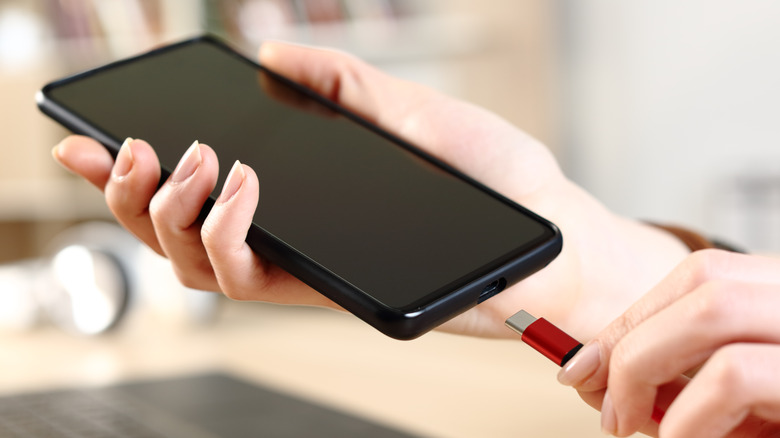How To Root Android Smartphones And Tablets
While Android devices are highly customizable, there are some things that Google, your service provider, or your manufacturer definitely don't want you to do. This may include things like uninstalling bloatware apps or changing inaccessible settings. This is where rooting comes in handy.
With a properly rooted device, you can go wild and overclock your CPU, or install custom Android ROMs. You can even do gray-area stuff like block ads system-wide or make copies of files you're not supposed to. No matter what your motivation is, rooting is an option for most Android devices. Often, this requires using exploits or other clever hacks. Some Android devices are easier to root than others, while some are currently not possible to root.
Keep in mind that rooting can damage or destroy your device. Some things may not run on rooted Androids, like banking apps or Netflix. You're also at a higher risk for security issues; Malware can escalate from a simple annoyance to a really big problem if you're not careful. You should definitely not root if you're not familiar with things like basic digital security. You'll need to be willing to risk anything from a bricked device to your credit card number getting in the hands of an eager hacker. Be very cautious if you decide to root your Android.
What is rooting?
Before we dive into rooting your device, let's step back. What exactly is "root?" In a modern operating system (OS), any given user — including the administrator — is not given full control. This is a security step to ensure that someone who gains control over the admin account isn't able to do whatever they want. Remember Windows 95? It included almost zero security features, according to Infosec Institute. If malware or hackers got access, they had full, unrestricted power.
Modern OSes have stricter access controls. Nowadays, apps must request permission to access certain functions. The admin has to click a button or enter their password to grant the request. Even still, there's usually a level above administrator that still has full access to everything, just like Windows 95, only it's highly restricted by the OS. In Linux, on which Android is based, this access level is known as "superuser" or simply root (per How-To Geek).
Not having root access is actually a good thing from a security perspective. However, companies in the Android ecosystem can use access controls to lock off certain features or settings for whatever reason they see fit, and those reasons are not always great. The manufacturer or service provider may want to do something like charge users extra for a feature or make things difficult for competitors. It's situations like these that can lead power users to throw caution to the wind and root their devices.
Let's get to rooting
The first step to any successful root is to back up everything you want to keep. Rooting Android will completely wipe your data. Just like when you upgrade to a new device, don't do anything until you're 100% satisfied that all of your data is securely saved somewhere else. Once that's done, it's time to talk about the sad truth of rooting Android — there's no singular, easy way of doing it.
The fact is, you're going to need to do some research to find out the best way to root your device, and even then, it's likely required that you have some technical know-how. Look at it this way, it's probably for the best that it's a complicated process because it ensures that you know what you're getting into.
The best place to find info about rooting your Android model is to check XDA's big list of root instructions. It's separated by manufacturer and is regularly updated to include new and popular devices. Find yours in the list and follow the linked guide (or visit the sub-forum for your manufacturer and find your model there if it's not listed). You will likely need access to a PC, and there's a good chance you'll be using a command line, too. You'll need to follow the guide precisely. Read carefully, don't skip ahead. Consider this another warning that you shouldn't root unless you're absolutely sure about it.
I'm rooted, now what?
Assuming you followed a guide to root your device (and weren't one of the unlucky people with one that can't be rooted), you should be all set now. You most likely had a specific reason for wanting to root, but what if you're looking for other cool stuff to do now that it's done? Good news, there are a wide selection of apps out there made just for rooted Android (via XDA).
There are specialized backup apps for making exact clones of your device, development tools of all shapes and sizes, advanced file browsers that can recover deleted data, ad blockers, and much, much more. Yes, the majority of them are technical apps with very specific uses, but depending on what you're intending to do with root access, some of them may be invaluable.
What if you're rooted and find out it's not all it's cracked up to be? Thankfully, it's pretty easy to unroot, according to Android Authority. You've got several options for getting your Android phone back to its original state, and most are far less difficult than rooting it in the first place. If you decide you want root again, you can follow the same process you used previously to get it back, but be warned that Google and manufacturers frequently block popular root methods, so the way you rooted before may stop working at any point. Always check for the most up-to-date information.



